clover懒人
You are probably reading this article on your smartphone connected to the nearest cell tower or your laptop connected to a WiFi router. Some people in Kenya, meanwhile, are doing the same, but through balloons floating 65,000 feet above Earth.
您可能正在与最近的手机信号塔连接的智能手机或与WiFi路由器连接的笔记本电脑上阅读本文。 与此同时,肯尼亚的某些人也在做同样的事情,只是通过气球漂浮在地球65,000英尺上方。

These balloons, operated by Loon, a subsidiary of Google’s parent company Alphabet, are hoping to solve a problem that many are unaware of. As ubiquitous as the internet seems, nearly half the world’s population still does not have access to it. In other words, one of every two people across the globe is not part of the digital revolution that is shaping the 21st century.
这些气球由Google母公司Alphabet的子公司Loon操作,希望解决许多人不知道的问题。 尽管互联网似乎无处不在,但仍有近一半的世界人口无法使用它。 换句话说,全球每两个人中就有一个不属于塑造21世纪的数字革命。
But there’s a lot of disparity in these numbers. Among developed nations, like the US and EU, internet penetration is well over 80 percent. But in many African nations, however, this figure drops to lower than 30 percent.
但是,这些数字之间存在很大差异。 在美国和欧盟等发达国家中,互联网普及率远远超过80% 。 但是,在许多非洲国家,这一数字下降到不足30% 。
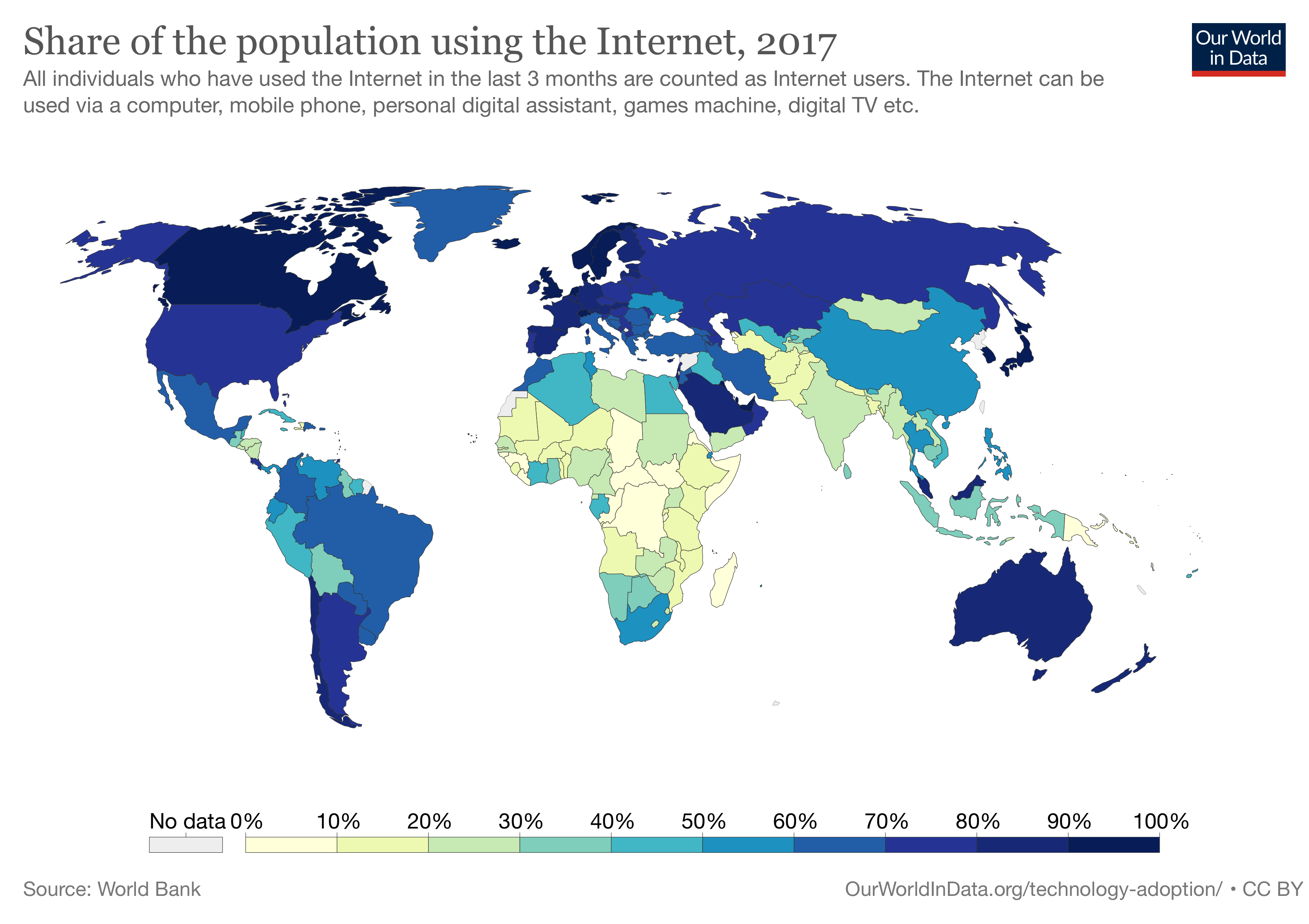
Among the challenges faced in bringing this technology to lesser developed nations is the high cost of infrastructure. Providing reliable internet access requires laying tens of thousands of miles of cables and setting up just as many mobile towers.
将这项技术推向欠发达国家所面临的挑战之一是基础设施的高昂成本。 提供可靠的互联网访问需要铺设数万英里的电缆,并建立尽可能多的移动塔楼。
Many innovative solutions are in the works to overcome this challenge. Among them are SpaceX’s plan to create a satellite constellation and beam internet from space and Facebook’s plan to fly internet providing drones.
许多创新的解决方案正在努力克服这一挑战。 其中包括SpaceX计划从太空创建卫星星座和束流互联网的计划,以及Facebook计划飞行提供无人机的互联网的计划。
But the most preposterous idea to emerge was Google’s plan to provide the internet with balloons. An idea so absurd that the person appointed as the CEO of this very project recently remarked: “Frankly, I didn’t think it would work. It seemed too crazy, even for a company with a reputation for making the outlandish possible.”
但是,最荒谬的想法是Google计划向互联网提供气球。 一个想法如此荒唐,以至于被任命为这个项目的首席执行官的人最近评论道 :“坦率地说,我认为这行不通。 即使对于一家以使古怪的事情成为可能而闻名的公司来说,这似乎也太疯狂了。”
Yet, it’s the most promising solution at the moment.
但是,这是目前最有希望的解决方案。
懒人气球真的有用吗? (Do Loon balloons actually work?)
What started off as a secret Google project in 2011 has now come a long way.
从2011年Google的一个秘密项目开始至今已有很长的路要走 。
The very first tests involved off-the-shelf WiFi routers packed into styrofoam cooler boxes and attached to all kinds of weird look balloons. These tests allowed the team to study the feasibility of the project and hone in on the right shape and material for the balloon.
最初的测试涉及将现成的WiFi路由器装入泡沫聚苯乙烯保温箱中,并连接到各种奇怪的外观气球上。 这些测试使团队能够研究该项目的可行性,并为气球选择合适的形状和材料。
Then in 2013, a sheep farmer in Canterbury, New Zealand became the first user to connect to the internet through a test balloon launched by Loon. A day later, the pilot experiment successfully demonstrated connectivity to nearly 50 users in Christchurch, New Zealand.
然后在2013年,新西兰坎特伯雷的养羊场成为第一个通过Loon发起的测试气球连接到互联网的用户。 一天后,该试验实验成功地证明了与新西兰基督城近50个用户的连接性。
In 2014, the team showcased this project’s potential by connecting a school in Campo Maior, Brazil to the internet for the first time. The same year the project accumulated nearly 3 million kilometers in test flights, amassing a trove of data to learn from.
2014年,该团队通过将巴西Campo Maior的一所学校首次连接到互联网,展示了该项目的潜力。 同年,该项目进行了将近300万公里的试飞,积累了大量可供学习的数据。

Loon’s ability to serve at scale was unexpectedly proven when Peru was hit by terrible floods in early 2017 and some of its telecom infrastructure got damaged. Since Loon was conducting tests in the country around the same time, it partnered with telecom operator Telefonica and the Peruvian Government to provide internet connectivity to tens of thousands of people affected by the flood.
当秘鲁在2017年初遭受严重洪灾袭击,并且其部分电信基础设施遭到破坏时,Loon的大规模服务能力得到了意外证明。 由于Loon大约在同一时间在该国进行测试,因此与电信运营商Telefonica和秘鲁政府合作,为成千上万受洪水影响的人们提供了互联网连接。
Later the same year, Loon once again came to the rescue in Puerto Rico when Hurricane Maria devastated the territory and wiped out 95 percent of the cell towers. This time around, Loon partnered with US cellular providers AT&T and T-Mobile to serve an even larger population of people. It was able to restore basic connectivity to about 200,000 people within four weeks.
同年晚些时候,当玛丽亚飓风摧毁了该地区并摧毁了95%的手机发射塔时,卢恩再次前往波多黎各进行营救。 这次,Loon与美国蜂窝电话提供商AT&T和T-Mobile合作,为更多的人群提供服务。 它能够在四个星期内恢复大约200,000人的基本连接。
By 2018, Loon’s ability to provide internet connectivity was neither questioned nor did the idea sound crazy anymore. But the project yet again found an unfortunate moment to shine. When an 8.0 magnitude earthquake hit Peru, Loom began filling connectivity gaps in the region within an astonishing 48 hours. A year later, Loon signed a commercial contract with Internet Para Todos to bring internet connectivity to the Amazon Rainforest Region in Peru.
到2018年,Loon的提供互联网连接的能力既不受质疑,也不再听起来疯狂。 但是该项目再次发现了一个不幸的时刻。 当秘鲁发生8.0级地震时, 织布机开始在惊人的48小时内填补该地区的连通性空白 。 一年后,Loon 与Internet Para Todos签署了一项商业合同,将互联网连接带到秘鲁的Amazon Rainforest Region。
In what might be its most significant achievement to date, in early July 2020, Loon began its first commercial operations when it turned on its services in Kenya. The launch of the service was accelerated to fulfill the sudden increase in internet demand caused by the coronavirus pandemic. To achieve this landmark feat, Loon partnered with Telkom Kenya and is providing LTE coverage to its subscribers across underserved western and central regions of the country. The 50,000 square kilometers of service area is covered by a fleet of about 35 balloons.
到目前为止,Loon可能会取得最重大的成就,就是在2020年7月上旬,它开始在肯尼亚提供服务时开始了其首个商业运营 。 加快了该服务的推出,以满足因冠状病毒大流行引起的互联网需求的突然增加。 为了实现这一里程碑式的壮举,Loon与肯尼亚Telkom合作,并为该国西部和中部地区服务水平较低的用户提供LTE覆盖。 50,000平方公里的服务区域覆盖了约35个气球。
Now that you’ve seen these balloons do actually work, let’s get into how they work.
既然您已经看到了这些气球确实有效,那么让我们开始研究它们的工作原理。
隆气球是由什么制成的? (What makes a Loon balloon?)
The balloon itself is made of polyethylene and is built to last over a hundred days in stratospheric conditions where winds can blow over 100 km/h and temperatures can drop to minus 90 degrees celsius.
气球本身由聚乙烯制成,在平流层条件下可持续使用一百天,在这种情况下,风速可以超过100 km / h,温度可以降至零下90摄氏度。
Attached to the bottom of the ballon is a set of highly sophisticated equipment, neatly summarized in the graphic below.
气球底部附有一套高度精密的设备,在下图中巧妙地概括了这些设备。
The most instrumental equipment are the transceivers. You can think of these as floating cell towers. Since Loon uses standard cellular technologies, any LTE-enabled phone will be able to connect to its network like it would to a regular cell tower. This eliminates the need for any extra effort from the user to take advantage of this technology. In fact, customers will probably never know that they’re connected to a Loon balloon.
最多的仪器设备是收发器。 您可以将它们视为浮动单元塔。 由于Loon使用标准的蜂窝技术,因此任何支持LTE的电话都将能够连接到其网络,就像连接到常规蜂窝塔一样。 这样就无需用户付出任何额外的努力来利用该技术。 实际上,客户可能永远不会知道他们已连接到Loon气球。
这些气球如何提供互联网连接? (How do these balloons provide internet connectivity?)
The workings of a Loon balloon are easy to grasp. The transreceivers onboard connect with the ground centers of mobile network operators like Telkom Kenya on the ground which are connected with the rest of the internet through traditional fiber-optic cables. These antennas then relay this internet signal between a mesh of balloons and finally down to a user’s mobile phone.
懒人气球的工作原理很容易掌握。 机载收发器与地面上的移动网络运营商(如Telkom Kenya)的地面中心相连,后者通过传统的光纤电缆与互联网的其余部分相连。 然后,这些天线在网状气球之间中继此Internet信号,最后到达用户的移动电话。
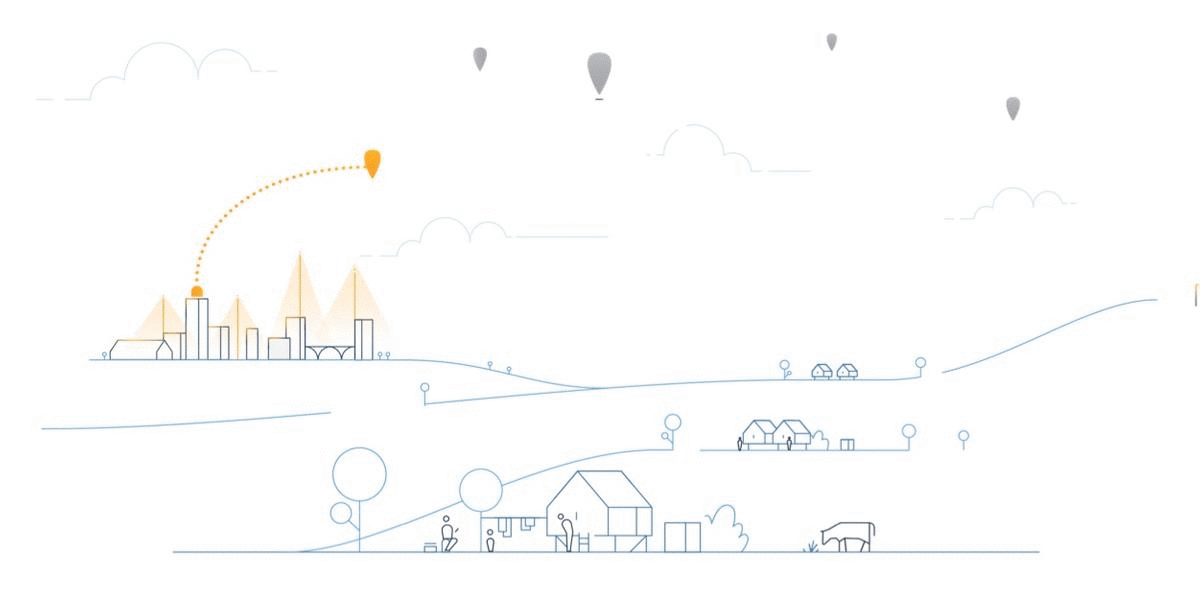
Loon’s biggest advantage compared to traditional towers is its height of operation. It flies over 20 km above Earth. To give you some context, that’s twice the height at which commercial airplanes fly. This allows each balloon to cover large swathes of area that would otherwise require hundreds of mobile towers. A single balloon can cover over 5,000 square kilometers, an area four times the size of New York City and a hundred times that of an average cell tower. But it is optimal to have multiple balloons serve an area to deliver the same bandwidth capacity and performance as cell towers.
与传统塔楼相比,Loon的最大优势在于其运行高度。 它飞过地球20公里以上。 为了给您一些背景信息,这是商用飞机飞行高度的两倍。 这允许每个气球覆盖大范围的区域,否则将需要数百个移动塔。 一个气球可以覆盖超过5,000平方公里 ,面积是纽约市的四倍,是普通手机发射塔的一百倍。 但是最好让多个气球为一个区域提供与蜂窝塔相同的带宽容量和性能。
懒人气球如何到达服务区域? (How do Loon balloons get to their service region?)
This is where things start to get complicated and fascinating. Unlike what your intuition might suggest, these balloons are not just released from the ground above which they serve. They instead fly in from Loon’s launch sites in Nevada or Puerto Rico.
这就是事情开始变得复杂而引人入胜的地方。 与您的直觉可能不同,这些气球不只是从它们所服务的地面上释放出来的。 他们从内华达州或波多黎各的Loon发射场飞来。
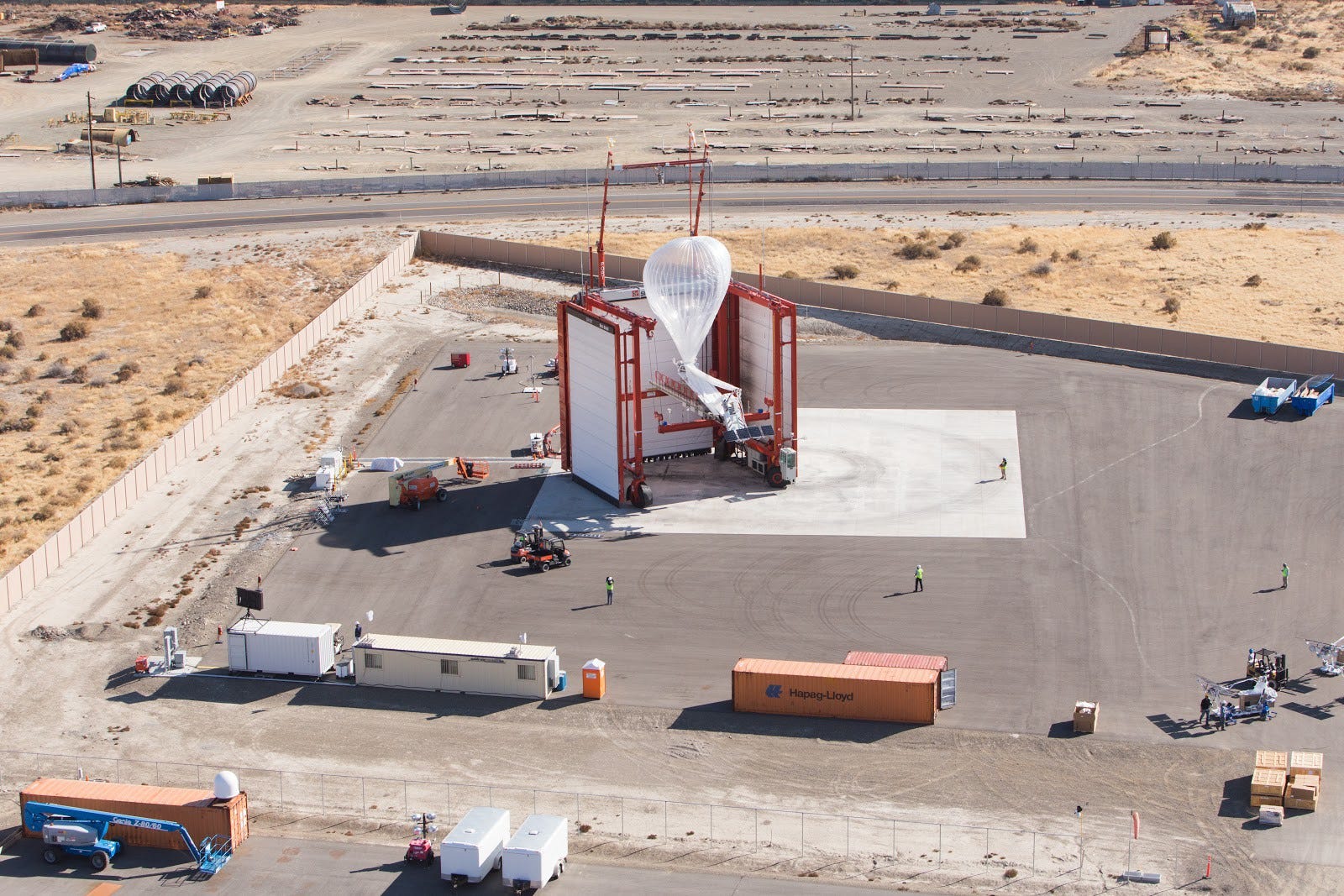
Take, for example, its journey to Kenya. Once the balloon is filled with gas by the launch system and released into the stratosphere from Puerto Rico, it has to make its way to a country that’s 11,000 km (6,800 miles) away. But since balloons do not travel in straight lines, the travel distance is, in fact, multiple factors more.
以其前往肯尼亚的旅程为例。 一旦气球通过发射系统充满气体并从波多黎各释放到平流层中,它就必须到达一个距离11,000公里(6,800英里)的国家。 但是,由于气球不是沿直线行进,因此行进距离实际上是多个因素。
In the stratosphere, although temperatures can be low and wind speeds are high, there are no clouds, wildlife or harsh weather events. At these stable layers, winds blow in predictable ways. Loon balloons rely on these winds to get to their destination.
在平流层中,尽管温度可能较低且风速较高,但没有云,野生动植物或恶劣天气事件。 在这些稳定的层,风以可预测的方式吹来。 懒人气球依靠这些风到达目的地。
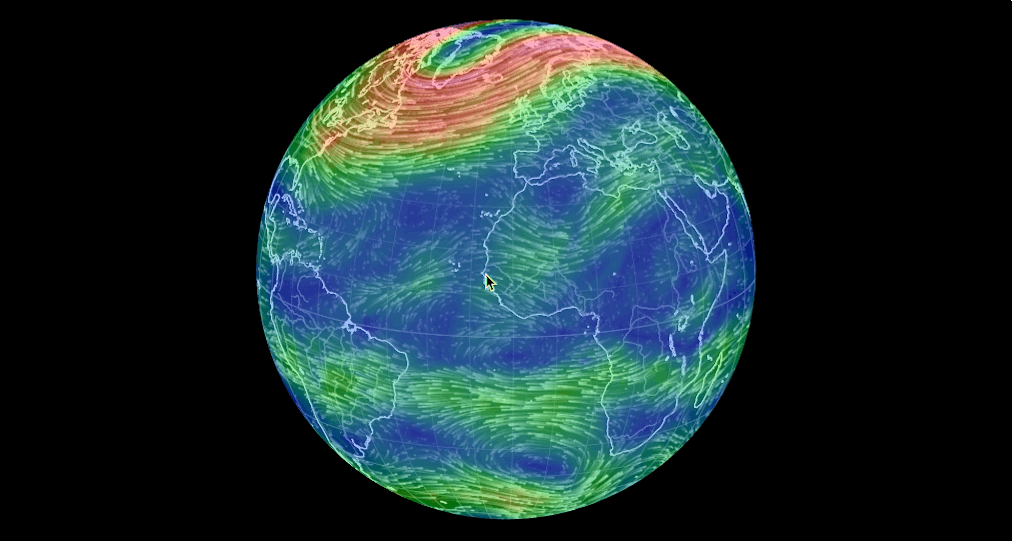
Despite its relative predictability, the wind patterns can change. This prevents us from foreseeing the exact route a ballon would take, which is determined in real-time by Loon’s onboard autonomous navigation system, which uses live data from the National Oceanic and Atmospheric Administration (NOAA) agency and data that the team has collected over the years.
尽管具有相对可预测性,但风型仍会改变。 这使我们无法预见气球将要走的确切路线,这是由卢恩(Loon)的机载自主导航系统实时确定的,该系统使用了来自美国国家海洋与大气管理局(NOAA)机构的实时数据以及该团队收集的数据这些年。
This system uses predictive models and machine learning algorithms to create maps of the sky that help determine which layer of wind to latch onto to get to the destination. Here’s a time-lapse of one such map. The balloon aims to be in the blue region, which would take it faster to Kenya than if it were in the orange or red region.
该系统使用预测模型和机器学习算法来创建天空图,以帮助确定要锁定到目的地的风层。 这是一张这样的地图的延时图。 气球的目标是在蓝色区域,比起橙色或红色区域,气球到达肯尼亚的速度更快。
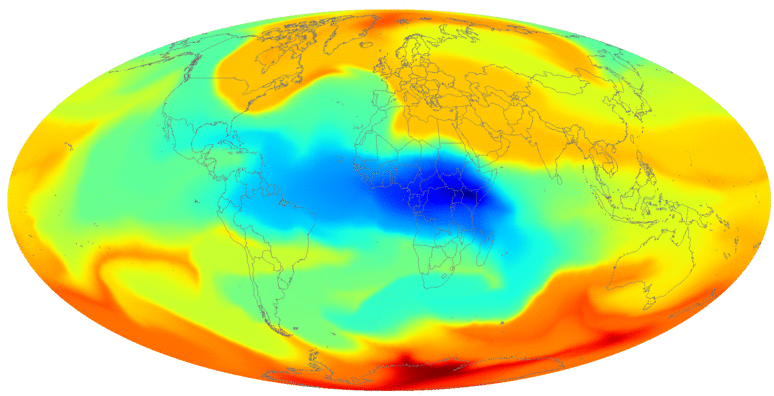
The route taken by Loon Balloon HBAL125 is shown below. The balloon took off from Puerto Rico and went around the Cape of Good Hope before taking a planned detour to collect weather data above the Indian Ocean. Eventually, it found its way to Kenya. This journey took about a month, but that includes its detour.
懒人气球HBAL125采取的路线如下所示。 气球从波多黎各起飞,绕过好望角(Cape of Hope),然后计划绕道而行,收集印度洋上空的天气数据。 最终,它找到了通往肯尼亚的道路。 此过程大约花了一个月的时间 ,但其中包括绕行。
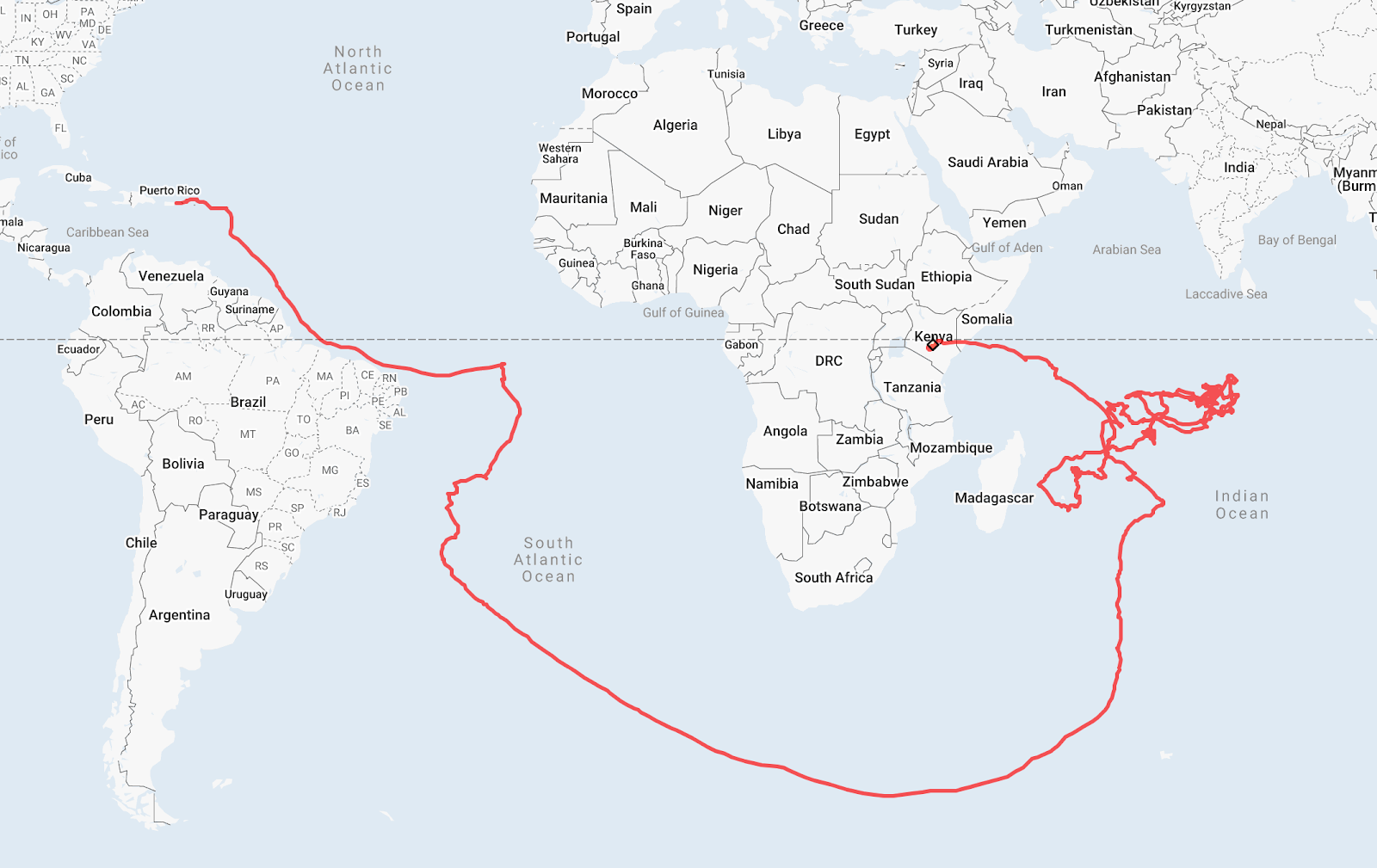
While HBAL125 took the route shown above, another a ballon with the same source and destination will almost certainly take a different route. In fact, the routes taken by two balloons might be so different that one might fly across central Africa to get to Kenya and another might take the trans-Pacific route and fly across Asia to get to Kenya. If you’re interested, you can track the journey of Loon balloons using the callsign HBAL on flightradar24.com.
虽然HBAL125采取上述路线,但另一架具有相同来源和目的地的气球几乎肯定会采用不同的路线。 实际上,两个气球所乘的路线可能相差甚远,一个可能会飞越中部非洲去肯尼亚 ,另一个可能会飞越跨太平洋的路线并飞越亚洲去肯尼亚。 如果您有兴趣,可以使用flightradar24.com上的呼号HBAL跟踪懒人气球的旅程。
气球到达目的地后如何保持在原位? (How do the balloons stay in place after reaching their destination?)
It does not get any easier for these balloons once they arrive at their destination. “The one really hard thing is making the balloon be in the place you want it to be,” admits Salvatore Candido, the principal engineer at Loon.
一旦这些气球到达目的地,这并没有变得更加容易。 卢恩(Loon)的首席工程师萨尔瓦托·坎迪多(Salvatore Candido) 承认: “一件非常困难的事情是将气球放置在您想要的位置。”
These balloons are at the complete mercy of the winds blowing at 100 mph. The only thing they can do at free will is to move up or down. When a ballon wants to go down, it fills the smaller inner balloon with more air. And when it wants to go back up, it releases this air. But by doing this simple routine in a well-calculated manner, Loon balloons are able to stay in and around a predefined area.
这些气球完全以100 mph的风速摆布。 他们唯一能做的就是向上或向下移动。 当气球要坠落时,它将使较小的内部气球充满更多的空气。 当它想返回时,它会释放空气。 但是,通过精心计算的简单例程 ,懒人气球能够留在预定区域内或附近。

To provide stable 24/7 internet to a given area they rotate among themselves so one balloon takes over from another when the other goes out of service area. The animation below shows just that. The orange balloons are responsible for serving an area and they hand-off this responsibility when they go out of reach.
为了向给定区域提供稳定的24/7互联网,它们会相互旋转,因此当另一个气球离开服务区域时,一个气球会接管另一个气球。 下面的动画显示了这一点。 橙色气球负责为某个区域提供服务,当它们无法到达时,它们会移交该责任。

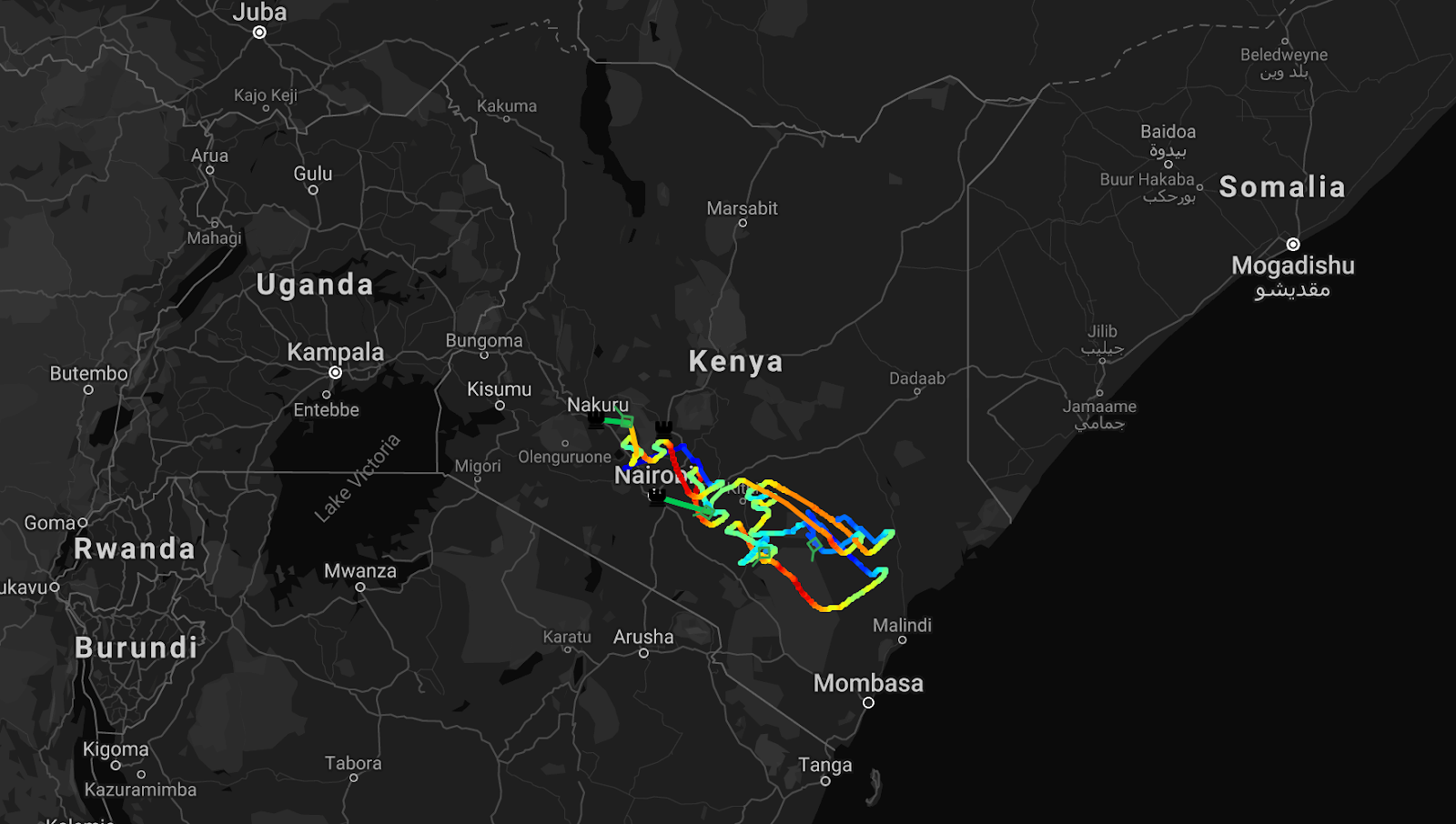
Initially, Loon planned on having enough balloons circumnavigate the earth such that one would take on communication from the other in a reliable fashion, sort of like a conveyor belt. But in its tests in Puerto Rico, Loon found that its algorithms are sophisticated and smart enough to be able to do this intricate dance in a much narrower area. This dramatically reduced the number of balloons needed to service an area, bringing down the cost along with it.
最初,Loon 计划让足够多的气球绕地球旋转,这样一个气球就可以像传送带那样以可靠的方式与另一个气球进行通讯。 但卢恩(Loon)在波多黎各(Puerto Rico)的测试中发现,它的算法十分复杂和智能,足以在更狭窄的区域进行这种复杂的舞蹈。 这大大减少了维修某个区域所需的气球数量,从而降低了成本。
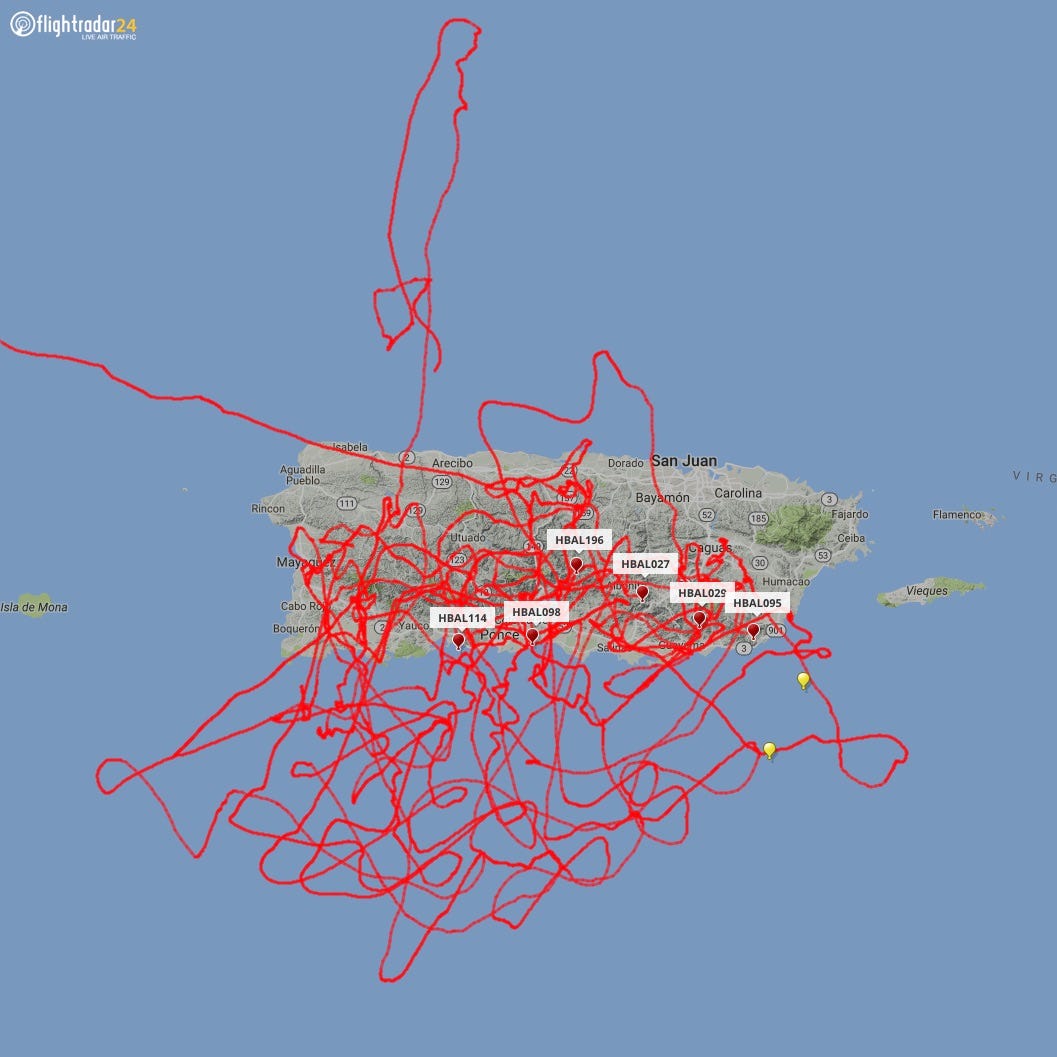
Loon是未来吗? (Is Loon the future?)
Telecom operators across the world are closely watching Loon’s operations in Kenya to determine if this solution is actually reliable and profitable.
世界各地的电信运营商都在密切关注Loon在肯尼亚的运营,以确定该解决方案是否确实可靠且有利可图。
Although Loon balloons have gone from lasting a few days to over a hundred days, at the end of which they are safely brought down and collected by a recovery team for analysis, this still means new balloons need to be launched every few months to continually provide internet service in an area. The logistics of this are yet to be proven at scale.
尽管Loon气球已从持续几天到一百多天,但在最后将它们放下并由恢复小组收集起来进行分析,但这仍然意味着每隔几个月就要发射一次新气球以持续提供一个地区的互联网服务。 其物流尚待大规模验证。
The business side of things remains opaque as well. We know nothing about the type of revenue sharing agreement Loon signs with its partners and when it will start breaking even. But we do know that compared to laying cable, building cell towers and sending satellites to space, balloons are more cost-effective. While satellites can cost millions of dollars to build and launch, a balloon costs tens of thousands of dollars. If Loon is able to capture just 5 percent of the market of nearly 4 billion underserved people and charge them a couple of dollars a month, its revenues will soar to tens of billions of dollars a year.
事物的业务方面也仍然不透明。 我们对Loon与合作伙伴签署的收益分成协议的类型以及何时开始收支平衡一无所知。 但是我们确实知道,与铺设电缆,建造手机信号塔和向太空发射卫星相比,气球更具成本效益。 人造卫星的建造和发射可能要花费数百万美元,而气球要花费数万美元。 如果Loon能够占领近40亿服务水平低下的人的市场的5%,并且每月向他们收取几美元的费用,那么其收入每年将飙升至数百亿美元。
It helps that these balloons rely entirely on solar energy to power its equipment and wind energy to get from one place to another. But the biggest cost advantage comes from the fact that a single balloon can serve far more people than a single cell tower. But this benefit comes with a catch. The ability to serve a larger population puts some constraints on the bandwidth that each individual user gets. In Kenya, initial tests showed an uplink speed of around 5 Mbps, a downlink speed of 19 Mbps, and 19-millisecond latency. Although these speeds are decent for most general uses they are a far cry from what a fiber optic connection offers and what 5G promises. Loon says it can add more balloons to a given area to increase bandwidth capacity but it remains to be seen if balloons can match the superior performance of 5G or if it can serve highly dense regions.
这些气球完全依靠太阳能为设备供电,而风能则可以从一个地方到达另一个地方。 但是最大的成本优势来自一个事实,那就是单个气球比单个蜂窝塔可以为更多的人服务。 但这带来了好处。 服务于更大数量人群的能力对每个用户获得的带宽施加了一些限制。 在肯尼亚,初步测试显示, 上行链路速度约为5 Mbps,下行链路速度为19 Mbps,时延为19毫秒 。 尽管这些速度对于大多数常规用途而言是不错的,但与光纤连接所提供的功能以及5G的承诺相差甚远。 隆恩说,它可以在给定的区域增加更多的气球,以增加带宽容量,但是,气球能否与5G的出色性能相匹配,或者它是否可以服务于高密度区域,还有待观察。
Loon has come under criticism for choosing Kenya as their first battlefield. Compared to other African countries, Kenya has a higher percentage of the population already connected to the internet. Loon’s unique selling point is to connect those who are not yet connected, and they are cannot use Kenya as the grounds for this.
卢恩(Loon) 因选择肯尼亚作为他们的第一个战场而受到批评 。 与其他非洲国家相比,肯尼亚已经连接互联网的人口比例更高。 卢恩(Loon)的独特卖点是将尚未联系的人联系起来,而他们不能以此为理由。
But if there’s one thing the Loon team has shown over the years, it’s their ability to persevere and defy all odds. In their first try, the balloon burst right after take-off. The same happened in the next sixty or so attempts. At the time, some of the best balloon experts wrote off the idea as “absolutely impossible.” But after hundreds of attempts, the company was able to successfully keep a balloon in flight for several weeks at a time. This soon became months and one ballon, in fact, made a record by staying in flight for 223 days and traveling 180,000 kilometers.
但是,如果Loon团队多年来表现出一件事,那就是他们坚持不懈并战胜一切的能力。 在他们的第一次尝试中,气球在起飞后立即破裂。 在接下来的大约60次尝试中也发生了同样的情况。 当时, 一些最优秀的气球专家以“绝对不可能”的方式写下了这个想法。 但是经过数百次尝试,该公司能够一次成功地将气球飞行了几个星期。 这很快就变成了几个月,事实上,一个气球在飞行中停留了223天 ,行驶了18万公里,创造了纪录。
Along with this flight time progress, Loon made remarkable advancements in developing navigation algorithms that enabled balloons to travel thousand of miles and stay together in an intricate mesh once they reach the destination. All this progress was put to test and proven to work when Loon came to the rescue in Peru and Puerto Rico. And now with its first commercial venture in Kenya, the once outlandish idea not only seems possible but is the leading solution to bring internet connectivity to the underserved and unserved.
随着飞行时间的进展,Loon在开发导航算法方面取得了显着进步,该算法使气球能够到达数千英里,并在复杂的网格中停留在一起。 当卢恩(Loon)在秘鲁和波多黎各(Puerto Rico)营救时,所有这些进展都经过了检验,并证明行之有效。 如今,随着它在肯尼亚的第一家商业企业的发展,曾经古怪的想法不仅可能实现,而且是将Internet连接引入服务欠缺和服务不足的领先解决方案。
clover懒人








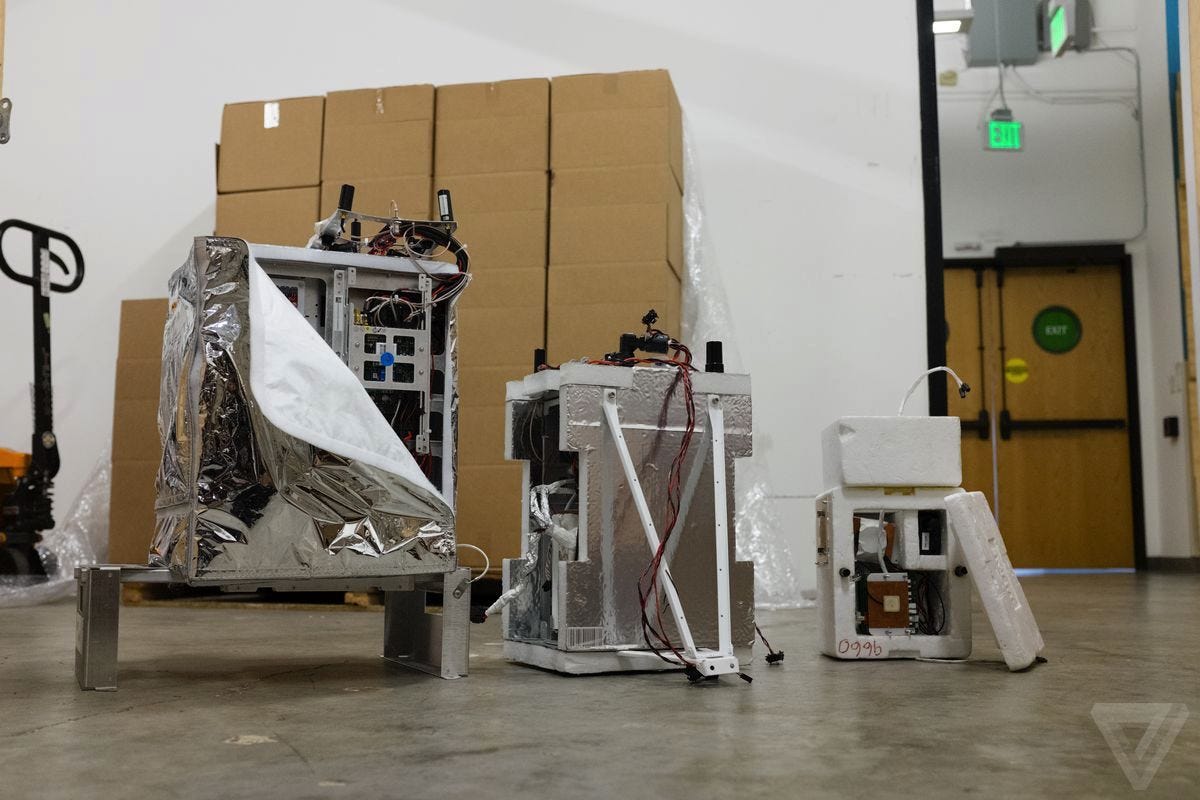
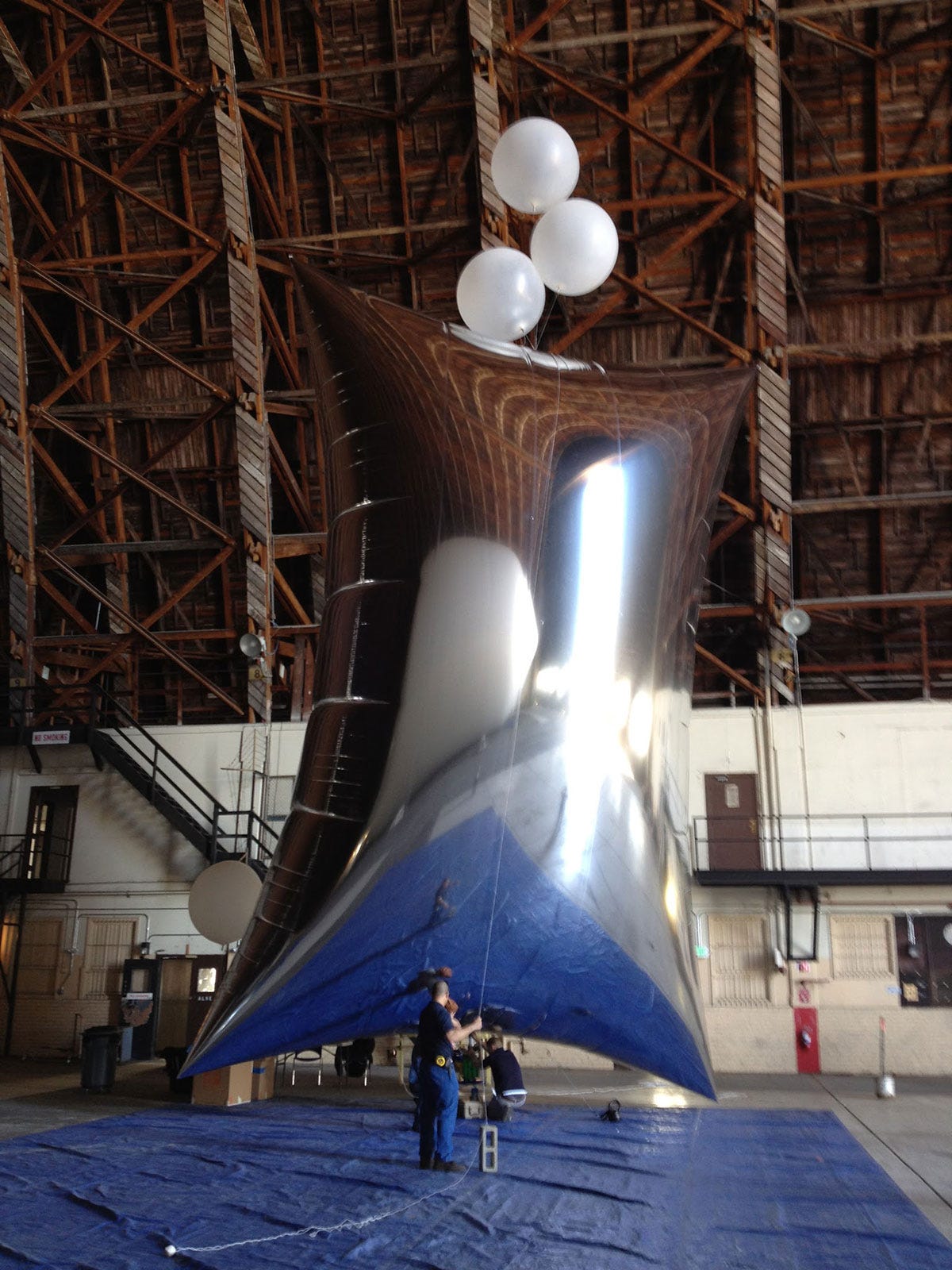
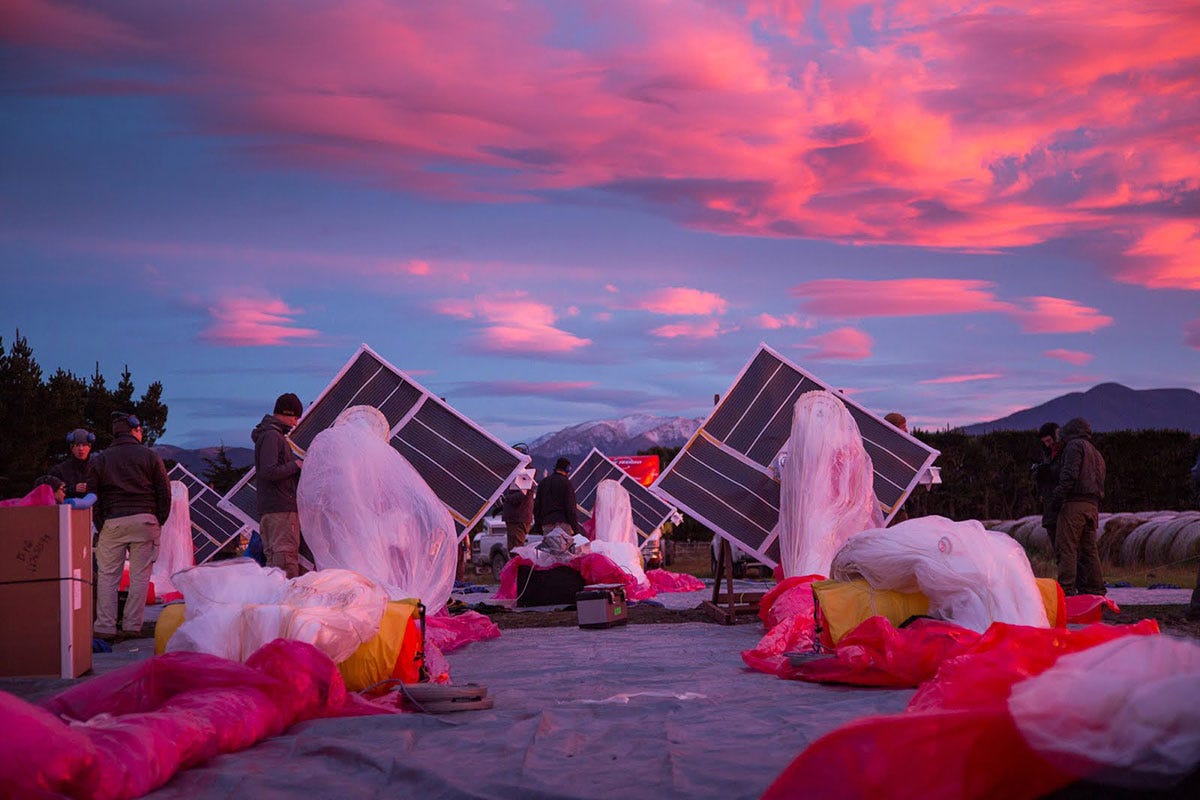

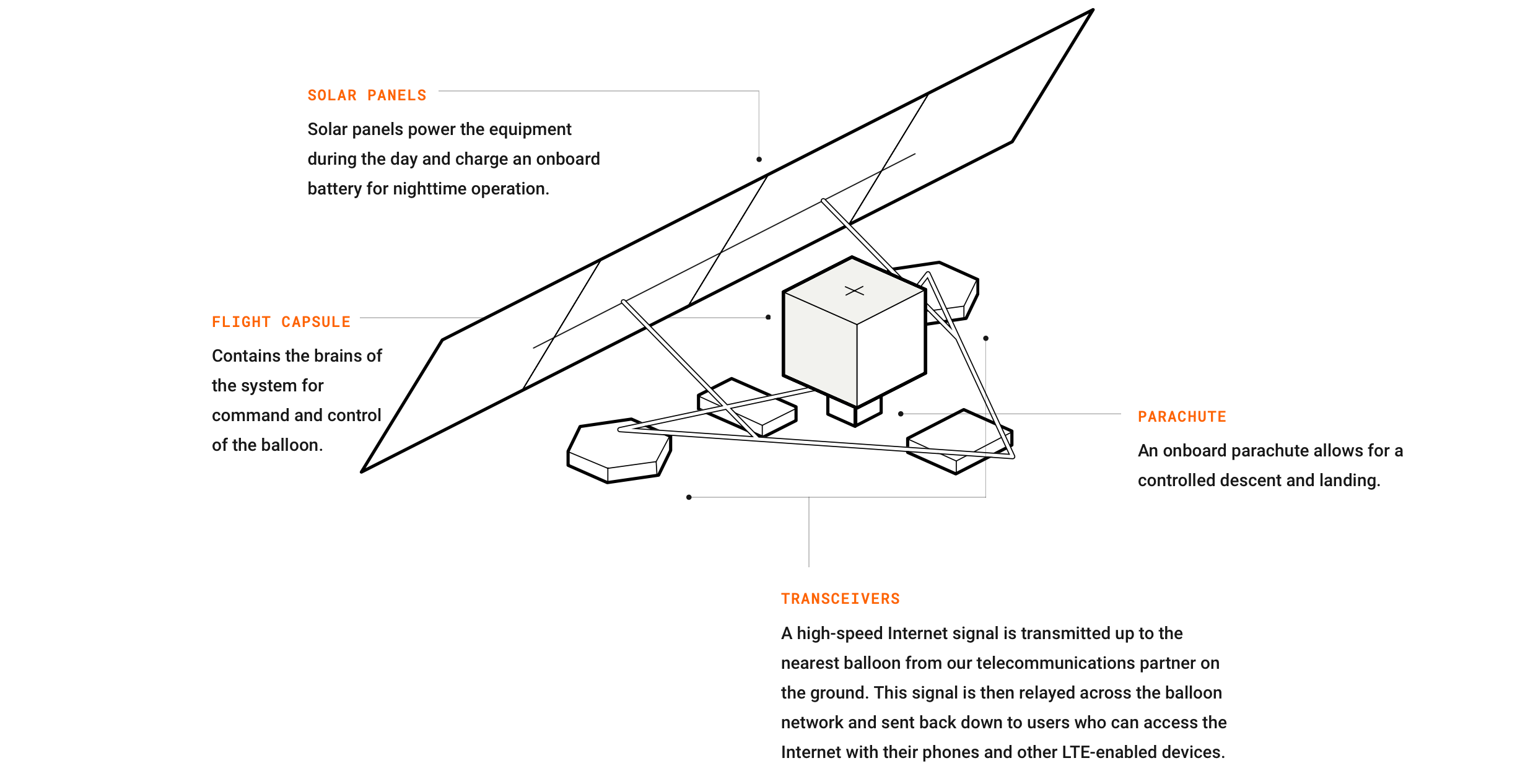













 6402
6402











 被折叠的 条评论
为什么被折叠?
被折叠的 条评论
为什么被折叠?








